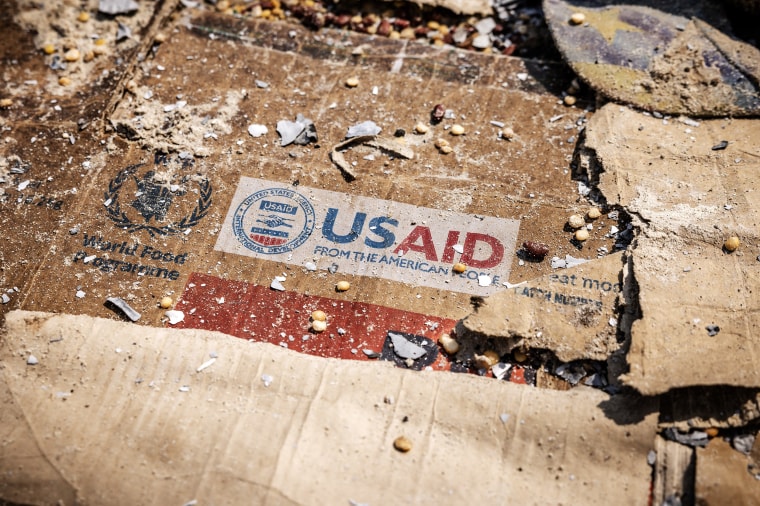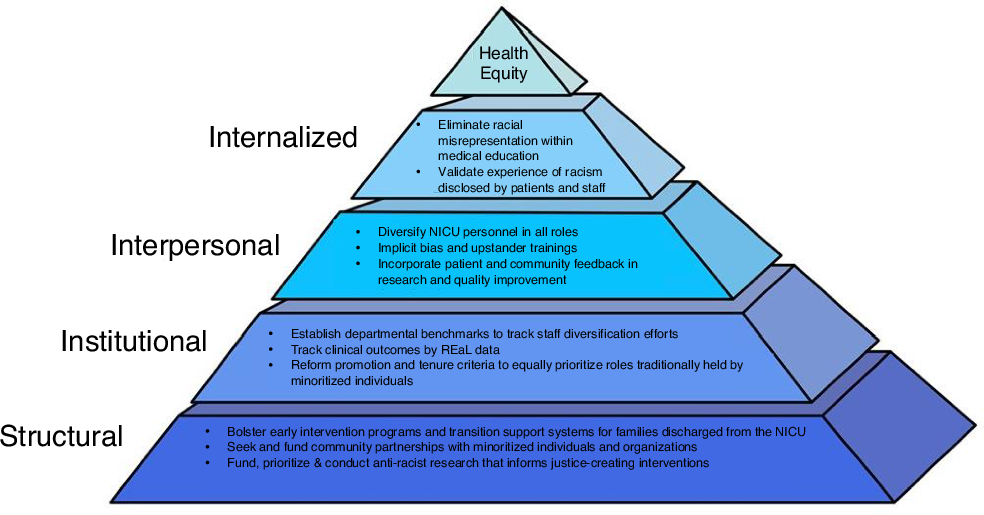Government Shutdown Could Disrupt Health Care Access | AJMC – AJMC

Report on the Impact of the US Government Shutdown on Sustainable Development Goals
The shutdown of the United States federal government, effective October 1, presents significant challenges to the nation’s progress toward several Sustainable Development Goals (SDGs), particularly SDG 3 (Good Health and Well-being), SDG 10 (Reduced Inequalities), and SDG 16 (Peace, Justice and Strong Institutions). The political impasse over healthcare funding, specifically the extension of Affordable Care Act (ACA) subsidies, has resulted in a disruption of services that threatens to reverse gains in public health and exacerbate existing inequities.
Institutional Failure and its Impact on Public Welfare (SDG 16)
The shutdown is a direct consequence of a failure in effective governance, undermining the principles of SDG 16. The partisan conflict over healthcare funding has paralyzed essential government functions, with direct consequences for citizen well-being.
- Democratic Position: Advocates for extending ACA subsidies to prevent sharp premium increases, aligning with the goal of ensuring universal health coverage.
- Republican Position: Insists on separating healthcare policy from the primary funding bill, prioritizing other fiscal considerations over the immediate continuation of health subsidies.
This stalemate demonstrates a weakness in institutional capacity to protect public services, directly impacting the achievement of other development goals.
Threats to Good Health and Well-being (SDG 3)
The shutdown directly jeopardizes universal health coverage (Target 3.8) and access to essential healthcare services for vulnerable populations. Several key areas are affected:
Disruptions in Healthcare Delivery and Access (SDG 3, SDG 10)
Service interruptions disproportionately affect marginalized communities, widening the gap in health outcomes and contravening the objectives of SDG 10 (Reduced Inequalities).
- Telehealth and Home-Based Care: The suspension of expanded Medicare telehealth authority threatens access to care for rural, elderly, and mobility-limited patients. This disruption forces a return to in-person visits, which can create delays and increase costs, particularly for those with chronic conditions. Programs supporting hospital-at-home services also face expiration, further limiting care options for vulnerable groups.
- Ambulance Services: The expiration of supplemental Medicare payments for ground ambulance services directly impacts emergency response infrastructure. This reduction in reimbursement could force providers, especially in rural and underserved areas, to reduce service capacity. Such a development compromises community safety and timely access to emergency care, a cornerstone of a functional health system as envisioned by SDG 3 and SDG 11 (Sustainable Cities and Communities).
Erosion of Financial Protection and Healthcare Affordability (SDG 1, SDG 3)
The potential lapse in ACA subsidies poses a severe threat to healthcare affordability, which could push households into poverty (SDG 1) and away from universal health coverage (SDG 3).
- Increased Insurance Premiums: Without subsidies, millions of individuals on ACA exchanges face substantial premium increases, with estimates suggesting a rise from approximately $900 to over $1900 annually. This could lead to as many as 4 million people losing coverage.
- Rising Employer and Senior Costs: Employers project a 6.5% increase in healthcare costs, likely to be passed on to employees. Concurrently, Medicare Part B premiums are projected to climb nearly 12%, placing an additional financial burden on older Americans.
These financial pressures undermine the core principle of SDG 3, which is to ensure healthy lives and promote well-being for all at all ages, by making essential healthcare financially inaccessible.
Analysis of Sustainable Development Goals (SDGs) in the Article
1. Which SDGs are addressed or connected to the issues highlighted in the article?
-
SDG 3: Good Health and Well-being
This is the most prominent SDG in the article. The entire text revolves around the impact of a government shutdown on healthcare services, access, and costs. It discusses disruptions to telehealth, ambulance payments, and the potential for rising insurance premiums under the Affordable Care Act (ACA), all of which directly relate to ensuring healthy lives and promoting well-being for all ages.
-
SDG 10: Reduced Inequalities
The article highlights how the healthcare disruptions would disproportionately affect vulnerable populations. It specifically mentions that “rural and mobility-limited patients” would be most impacted by the suspension of telehealth services and that “Patients in rural or underserved areas could be disproportionately impacted” by reduced ambulance services. This focus on the unequal impact on specific groups connects directly to the goal of reducing inequalities.
-
SDG 16: Peace, Justice and Strong Institutions
The central issue of the article is a “federal government shutdown” resulting from “deep partisan divisions.” This event represents a failure of effective governance and institutional processes. The inability of political institutions to pass a funding bill, leading to the disruption of essential public services like healthcare, directly relates to the goal of developing effective, accountable, and transparent institutions at all levels.
2. What specific targets under those SDGs can be identified based on the article’s content?
-
Target 3.8: Achieve universal health coverage, including financial risk protection, access to quality essential health-care services and access to safe, effective, quality and affordable essential medicines and vaccines for all.
The article’s discussion on extending Affordable Care Act (ACA) subsidies to prevent “sharp premium increases” and avoid millions losing coverage directly addresses the principles of universal health coverage and financial risk protection. Furthermore, the potential suspension of telehealth services, reduced ambulance payments, and disruptions to home-based care all concern “access to quality essential health-care services.”
-
Target 10.2: By 2030, empower and promote the social, economic and political inclusion of all, irrespective of age, sex, disability, race, ethnicity, origin, religion or economic or other status.
This target is relevant because the article points out that the negative consequences of the shutdown are not evenly distributed. It states that service gaps in telehealth would “most impact rural and mobility-limited patients,” and payment changes for ambulance services would disproportionately affect patients in “rural or underserved areas.” This highlights a failure to ensure equal access to essential services for these specific populations.
-
Target 16.6: Develop effective, accountable and transparent institutions at all levels.
The government shutdown is described as an “utter failure of Republican leadership” and a result of a political standoff where both parties cannot agree on a funding bill. This situation is a direct example of institutional ineffectiveness, where the government is unable to perform its core function of funding public services, thereby failing the objective of this target.
3. Are there any indicators mentioned or implied in the article that can be used to measure progress towards the identified targets?
-
Indicators for Target 3.8 (Universal Health Coverage)
- Health Insurance Coverage: The article implies this indicator by stating that “up to 4 million could lose coverage throughout a decade without subsidies.” The number of people with health insurance is a direct measure of coverage.
- Cost of Health Insurance Premiums: The article provides specific figures, suggesting that without subsidies, “yearly premiums rising from about $900 to more than $1900” and “Medicare Part B premiums could climb nearly 12%.” These figures serve as indicators of financial risk.
- Access to Essential Services: The potential suspension of “expanded telehealth authority” and reduced “ambulance service capacity” serve as qualitative indicators of access to essential healthcare services. Increased wait times for ambulances are also an implied metric.
-
Indicators for Target 10.2 (Reduced Inequalities)
- Disparity in Service Access: The article implies an indicator by specifying that service disruptions would most affect “rural and mobility-limited patients” and those in “underserved areas.” Measuring the difference in healthcare access and outcomes between these groups and the general population would be a relevant indicator.
-
Indicators for Target 16.6 (Effective Institutions)
- Government Functionality: The primary indicator is the “government shutdown” itself. The occurrence and duration of such a shutdown serve as a direct measure of institutional failure to maintain essential operations and services.
4. Summary Table of SDGs, Targets, and Indicators
| SDGs | Targets | Indicators |
|---|---|---|
| SDG 3: Good Health and Well-being | 3.8: Achieve universal health coverage, including financial risk protection and access to quality essential health-care services. |
|
| SDG 10: Reduced Inequalities | 10.2: Promote the inclusion of all, irrespective of status or location. |
|
| SDG 16: Peace, Justice and Strong Institutions | 16.6: Develop effective, accountable and transparent institutions at all levels. |
|
Source: ajmc.com

What is Your Reaction?
 Like
0
Like
0
 Dislike
0
Dislike
0
 Love
0
Love
0
 Funny
0
Funny
0
 Angry
0
Angry
0
 Sad
0
Sad
0
 Wow
0
Wow
0
















































/environment-climate-change-and-health-(ech)/water-sanitation-hygiene-and-health-(wsh)/landfill-tuvalu-36092.tmb-1200v.jpg?sfvrsn=5c21fe40_1#)

.jpg.webp?itok=0ZsAnae9#)























